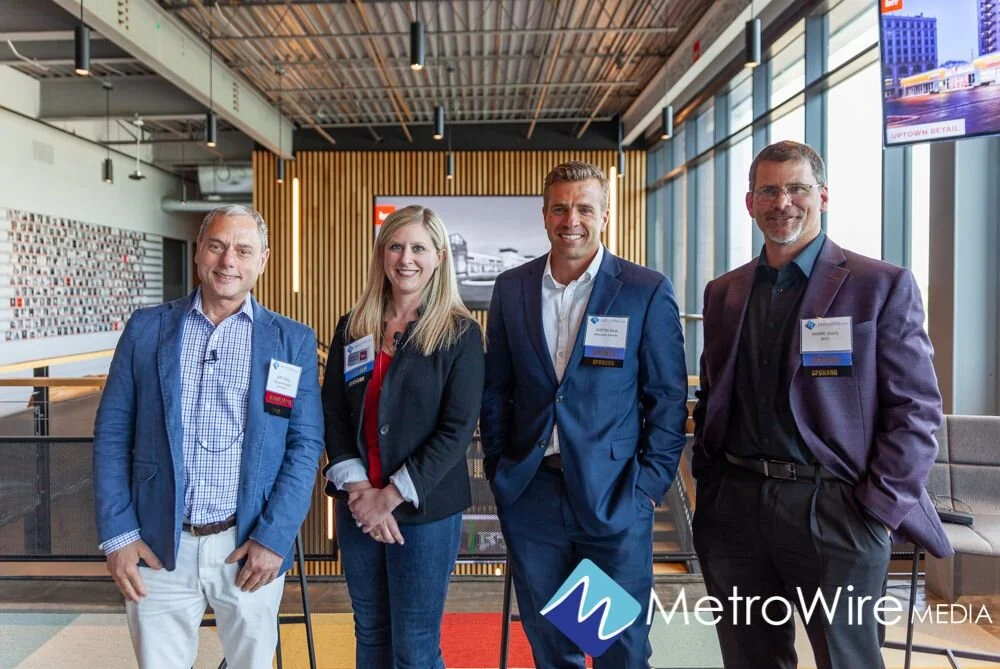Last Thursday, panelists Justin Beal, senior managing director – retail brokerage at Newmark Zimmer, Megan Whitman, vice president at BRR Architecture and Mark Sherfy, development services group leader/vice president at BHC, joined moderator Jeff Berg, partner at Elevate Property Advisors, for MWM’s 2021 Retail Summit hosted by BRR Architecture.
The panelists discussed how brick and mortar development must adapt to survive. With the rise of e-commerce - accelerated by the pandemic - consumer shopping habits have vastly changed, resulting in an excess of retail property.
“I think where we’re at today, we were going to be here anyway. We just had to start adapting a little quicker than anyone of us wanted to,” said Sherfy.
Restaurants have transitioned the most aggressively, said Beal. Some restaurants, like Chili’s and Applebee’s, for years have been offering curbside pickup. Others had to pivot to survive during the pandemic, competing against quick service restaurants that had existing drive-thru lanes.
“Restaurants, fast casuals, that had one drive thru will have two, two will have three and therefore shrink their floor plate and take up more ground; so that’s something that developers will have to get figured out,” said Beal.
“Drive-thrus are a must have, not only for traditional fast food restaurants, but the sit down restaurants are having pickup windows, branch banking - nobody goes to the branch but they all drive thru,” said Berg.
Berg said traditionally drive thrus have been frowned upon by the municipalities, especially in the higher-end neighborhoods. Sherfy said that even though cities are not going to like the proliferation of drive thrus, there will need to be some forward thinking on their part.
“For brick and mortar to get people back in the store, they’re going to have to cater to the downfalls of online shopping - that experiential piece, having those exclusive experiences,” said Whitman.
“A lot of the athleisure companies offer yoga classes and fitness classes. It’s not necessarily (that) they’re going there to buy something, but they’re having that experience — and again they’re gaining their loyalty,” said Whitman.
Whitman said retailers that are going to succeed are those that can bridge the gap between the physical side of shopping and the online side - or the “phygital.”
In the past, customer pick-up for orders placed online often would be at a kiosk at the store’s front door.
“How can we design (it) so if someone comes to pick up an order, they still have to navigate through the store, experience the store, talk to an associate or have that impulse buy?” said Whitman.
Mixed use developments have been popular for several years, but Whitman said the draw now is people want that community aspect and the feeling of a town center.
“And so thinking about how the different components of mixed use play off each other and strengthen each other, you have the office component that brings customers in that go over lunch into the local restaurant within that development, they might stop and shop, and then you have the residents that are there in the evenings and on weekends and drive that foot traffic. And then one thing we’ve seen more of in the mixed use development is the entertainment factor,” Whitman said.
“We’ve all heard the “live, work, play” and the one thing we have to take into consideration now is the work aspect of it. A lot of the office employees are still at home and intend to be at home for the foreseeable future; and if they’re in a mixed use environment, that’s a new consumer who is going to be there during daytime population hours,” said Beal.
“Mixed use does make a lot of sense for retailers. And I think the ones who may have been a little more reluctant to it previously are becoming more open to it,” Beal said.
The market is saturated with an immense amount of second, third and fourth generation retail that may not be in favor anymore. Beal said in some cases, depending on the submarket, it makes sense to repurpose and reenergize the space; but in a lot of cases, that retail corridor has moved, and it’s not coming back.
If the property has the right infrastructure and access point to interstate, Beal said it could be used as a distribution center.
In addition, there are a lot of service-oriented retailers such as physical therapists, chiropractors and financial services providers looking for space that can’t afford the high price tag of new construction which also comes with high property taxes.
“They’re going to gravitate towards second and third generation spaces that are already built and have a lower cost basis,” said Berg.
View MWM’s Retail Summit photo album here.

